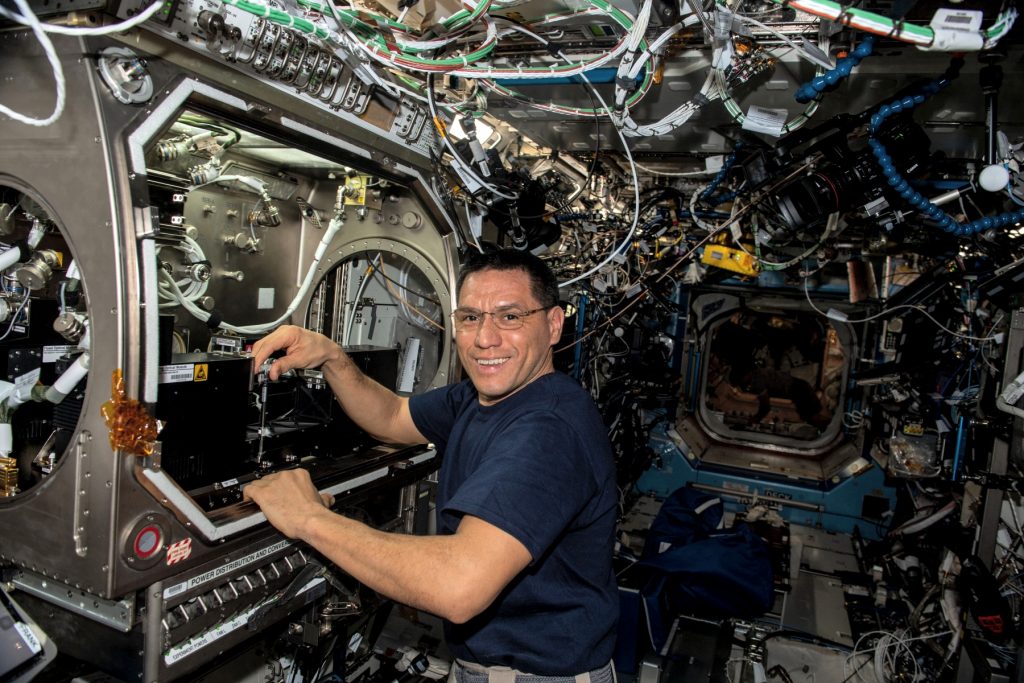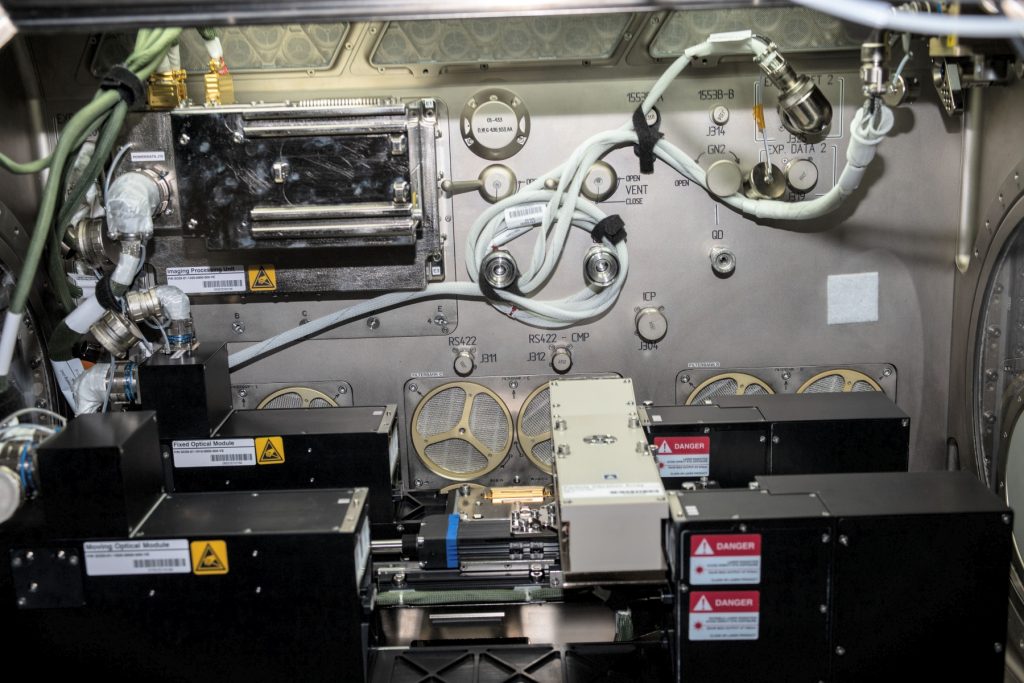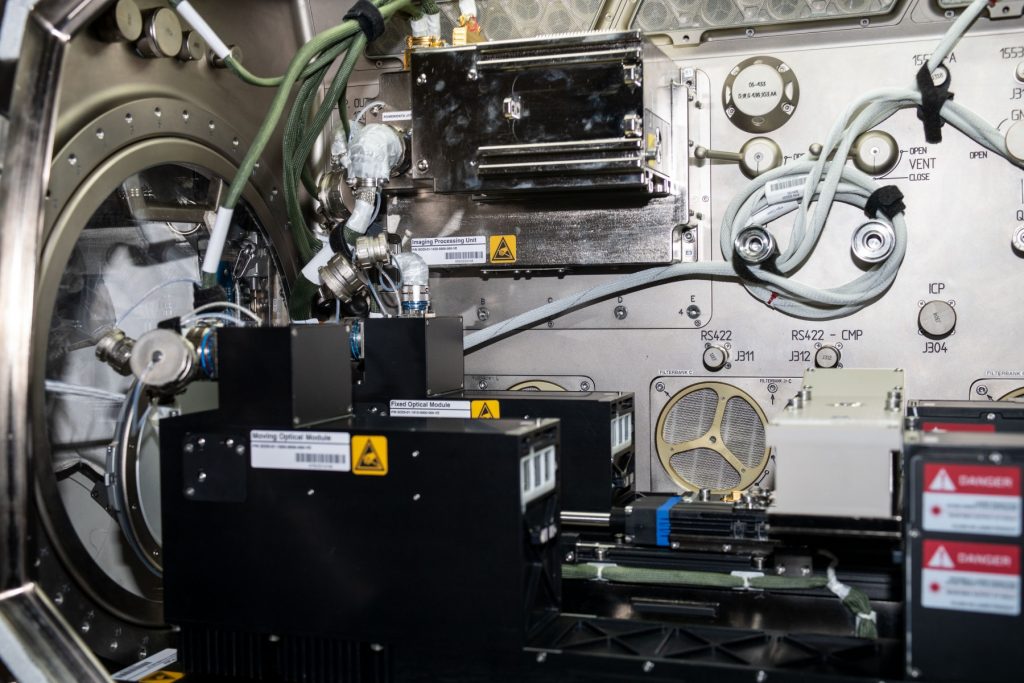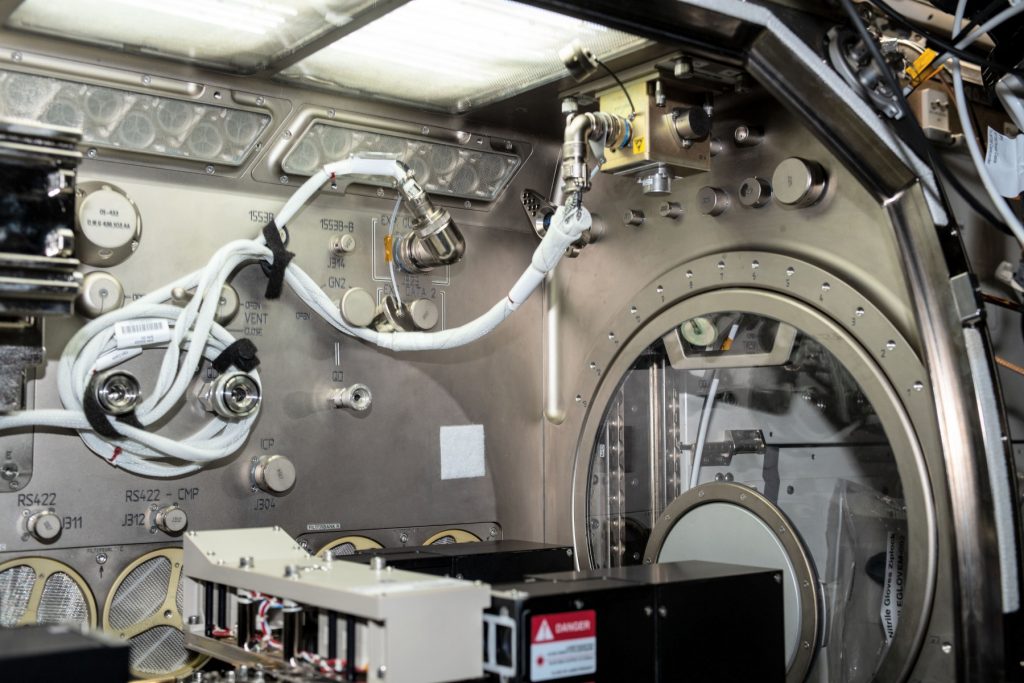Why is the International Space station needed for this experiment?
Gravitational attraction is a fundamental property of matter that exists throughout the known universe. The presence of Earth creates a gravitational field that acts to attract objects with a force inversely proportional to the square of the distance between the center of the object and the center of Earth. When the acceleration of an object acted upon only by Earth’s gravity at the Earth’s surface is measured, it is commonly referred to as one-g (1g) or one Earth gravity. This acceleration is approximately 9.8 meters per second squared [m/s2]. The weight of an object is the gravitational force exerted on it by Earth.
While the mass of an object is constant and the weight of an object is constant (ignoring differences in g at different locations on the Earth’s surface), the environment of an object may be changed in such a way that its apparent weight changes. Although gravity is a universal force, there are times, in fact, when it is not desirable to conduct scientific research under its full influence (visit, e.g., the Particle Vibration scientific description page ). In these cases, scientists perform their experiments in “microgravity”, a condition in which the effects of gravity are greatly reduced, sometimes described as “weightlessness“. This environment provides a unique laboratory in which scientists can observe and explore physical events, phenomena, and processes that are normally masked by the effects of Earth’s gravity.
In recent years, microgravity research has become an exciting tool for innovation in many scientific fields. Microgravity platforms include, for example drop towers, sounding rockets, parabolic flights, and of course the International Space Station (ISS). However, long periods of microgravity are only offered by the latter. The PARTICLE VIBRATION (T-PAOLA) experiment has required 3 months of continuous activities (a period of microgravity that only the ISS can provide). This has enabled the science team to test the behaviour of solid particles dispersed in a liquid for a variety of operating conditions (different frequencies and amplitudes of the applied vibrations, magnitudes of the imposed temperature difference and related shaking times).
![International Space Station (ISS) [NASA]](https://t-paola.co.uk/wp-content/uploads/2020/01/ban-iss-news-1.jpg)
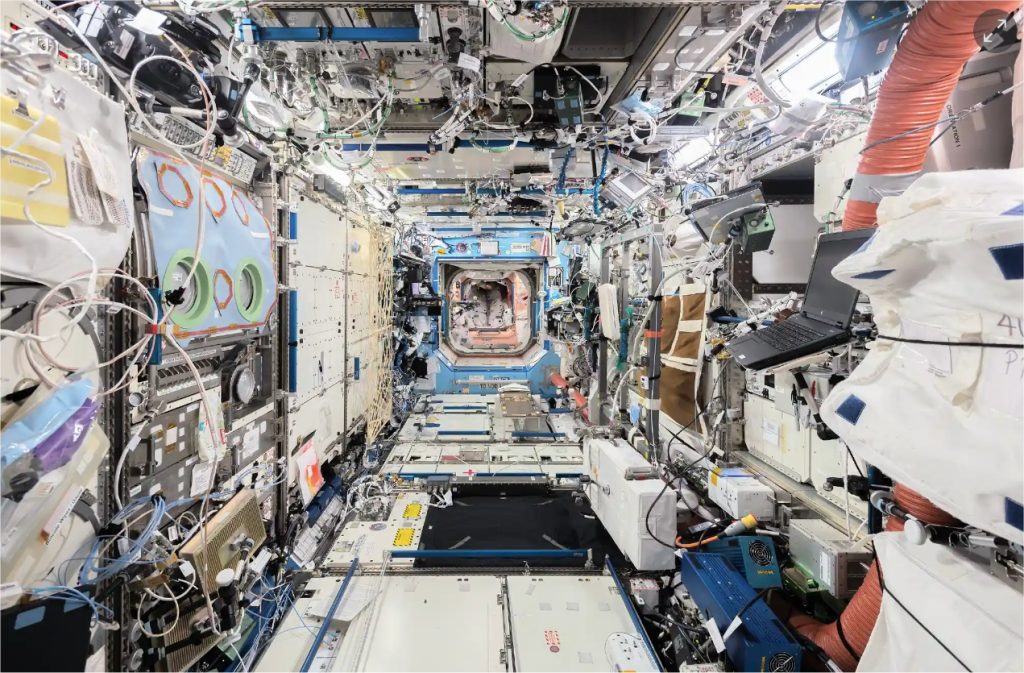
The International Space Station is the most important international cooperative program ever undertaken in the scientific and technological fields. The assembly of the ISS, which began in November 1998, was completed in 2011 after approximately 60 assembly missions carried out by the Shuttle and Russian launchers. It is a joint program between USA, Russia, Japan, Europe (ESA) and Canada and is the greatest work ever realized in time of peace, engaging 16 nations all over the World. Being permanently on orbit, the ISS provides for the first time the opportunity to perform systematic, long-lasting investigations in many scientific disciplines.
ISS components:
-6 laboratory modules (2 USA – a laboratory and a Centrifuge Accommodation Module (CAM), 1 European Space Agency (ESA) – Columbus Orbital Facility, 1 Japanese – Experiment Module (JEM), 2 Russian Research Modules);
-2 habitation modules (1 American, 1 Russian);
-4 logistic modules (3 Russian, 1 American);
-2 airlocks (1 Russian, 1 American);
-2 trusses (1 American, 1 Russian);
-24 solar pannels (16 American, 8 Russian);
-11 radiator panels (10 American, 1 Russian);
-3 external robotic arms (1 Canadian, 1 Japanese, 1 European).
The ISS in numbers:
-flies at a height between 350 and 450 km above the Earth;
-completes an Earth orbit revolution every hour and a half;
-is as big as a football field (108 x 79 meters);
-weight = 450 tons;
-hosts 6/7 crew members;
-disposes of 110 kW of power;
-to be completed has required more than 60 space launches (Shuttle, Proton, Soyuz);
For further details see : “International Space Station: A guide for European users”, ESA SP-1202, ESA publication Division ISBN 92-9092-407-1.
Space research
Space research needs to be presented to the public as what it really is: a natural, human attraction for the unknown without forgetting, however, that a serious scientific effort always bears a commitment to be beneficial for humankind. Currently, the motivation for microgravity-based studies often begins with a purely scientific interest to question, observe and understand certain fundamental laws and basic phenomena. But the answers to purely scientific questioning can quickly be taken up and applied to practical problems in the development of technical systems and, from time to time, in the discovery and introduction of new processes with a major industrial and economic impact.
Take a tour of the International Space Station and its Laboratories for scientific research! Watch the videos below!
Science modules:
The ISS features three main science modules (Fig. 1.8): the US-built (Destiny) Lab, Europe’s Columbus Laboratory (ESA-COF) and the Japanese Kibo experiment module.
The US Lab was launched on 7 February 2001 and is an 8.5-[m] long, cylindrical, pressurized module. It has a capacity of 24 rack locations and can accommodate 13 laboratory racks.
The Columbus Laboratory (see Fig. 1.9) is a 6.8-[m] long cylinder that contains 75 [m³] of internal space. This space accommodates an entire suite of science laboratories. The module, in fact, has room for 10 International Standard Payload Racks, each hosting an entire laboratory in miniature – complete with power and cooling systems, and video and data links to researchers back on Earth. Four external mounting points allow experiments to be conducted in the vacuum of space.
Kibo is Japan’s first manned space facility that allows up to four astronauts to perform scientific experiments. It consists of four components: two experimental facilities (one pressurized and one exposed), logistics modules attached to each of them and a manipulator arm to be used for experiments.
Laboratories and facilities:
The list of acronyms and abbreviations below provides disjoint glimpses of the rich variety of multiuser laboratories and facilities accommodated in the different ISS science modules for studies in the field of fluids (e.g., the Microgravity Science Glovebox, MSG; the American Fluids and Combustion Facility, FCF; the European Fluid Science Laboratory, FSL; the Japanese Fluid Physics Experimental facility, FPEF), inorganic material science (e.g., the Materials Sciences Laboratory, MSL with the Low Gradient Furnace LGF, the Solidification and Quenching Furnace SQF and the Float Zone Furnace FMF; the High Gradient Directional Solidification Furnace Experiment Module, HGDS; the Directional Solidification and Vapor Transport Experiment Module, DSVT; the Advanced Tubular Furnace With Integrated Thermal Analysis Under Space Conditions, TITUS; the Quench Module Insert, QMI; the Diffusion Module Insert, DMI; the Advanced Thermal Environment Furnace ATEN; the Advanced Furnace for Microgravity Experiment with X-ray radiography, AFEX; the Gradient Heating Furnace, GHF, etc.) organic material science (the Protein Crystallization Diagnostics Facility, PCDF; the Solution Protein Crystal Growth Facility, SPCF; etc.) and biotechnology (the BIOLAB; etc.).
For additional details see: “Fluids, Materials and Microgravity: Numerical Techniques and Insights into the Physics“, 538 pages – ISBN-13: 978-0-08-044508-3, ISBN-10: 00-804-4508-X, Elsevier Science (2004, Oxford, England)
Visit the PARTICLE VIBRATION Hardware Installation Page to watch videos showing the crew installing the PARTICLE VIBRATION (T-PAOLA) hardware on board the ISS !
Watch the live video of our planet from the International Space Station (Official NASA stream) !
